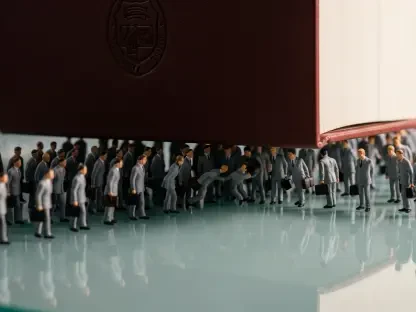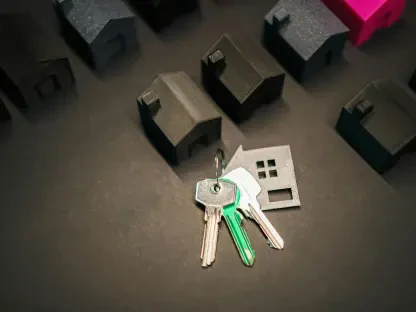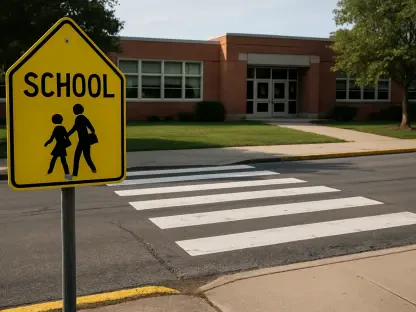The Santa Monica-Malibu Unified School District (SMMUSD) is once again reaching out to the community for support with Measure QS, a significant school bond measure poised to appear on the November 2024 ballot. This measure seeks approval to issue $495 million in bonds for the renovation and repair of Santa Monica schools, addressing the longstanding issues of aging infrastructure and outdated facilities. As the vote approaches, understanding the intricacies of Measure QS becomes crucial for Santa Monica residents.
Measure QS: A Comprehensive Overview
The Core Objective
Measure QS aims to tackle essential renovations in Santa Monica schools, including fixing leaky roofs, updating electrical wiring and plumbing, removing hazardous materials, and upgrading classrooms and labs. This initiative stems from the growing recognition that Santa Monica’s educational infrastructure requires significant modernization to meet current standards and improve the overall learning environment for students. Schools in the district have faced years of underfunding, causing them to age rapidly and fall below desirable safety and efficiency levels. By securing almost half a billion dollars, the measure seeks to address a myriad of critical needs.
Alongside the physical repairs, Measure QS also focuses on enhancing instructional technology by upgrading classroom setups and laboratory equipment. This aligns with the ongoing shift towards digital learning environments, ensuring that students and teachers have access to state-of-the-art educational tools. The goal is not just to bring facilities up to par but also to forward Santa Monica schools into a new era of learning, making them competitive with the best educational institutions across the state.
Voter Requirements and Ballot Error
For Measure QS to be enacted, it requires at least 55% voter approval from Santa Monica residents. In an unfortunate twist, a ballot error by the Los Angeles County Registrar mistakenly included Measure QS on ballots district-wide, affecting both eligible and ineligible voters. Efforts are currently underway to correct this issue, ensuring that only Santa Monica votes for Measure QS are counted, maintaining the integrity of the electoral process. This mistake has raised concerns about potential confusion among voters and the need for clear communication to rectify the error.
The ballot error underscores the importance of meticulous administrative work in elections, highlighting potential risks in large-scale voting operations. To mitigate further issues, local authorities have assured residents that corrective measures will be meticulously applied. Clear guidelines and public notifications are being planned to inform voters of the correction process. The transparency in addressing the error aims to restore trust and ensure that the measure proceeds on an honest and fair basis.
Financial Implications
If approved, Measure QS will result in an increase in property taxes, estimated at an average of $30 per $100,000 of assessed property value. This localized tax increase is designed to fund the proposed $495 million bond, aimed at modernizing school infrastructure to foster better educational outcomes. Homeowners will need to assess how this tax increase fits into their broader financial planning, particularly in a community known for its high real estate values. This impact on property taxes is a key consideration for all voters, influencing both direct financial commitments and the broader economic landscape of Santa Monica.
Moreover, Measure QS is structured to potentially leverage additional funds from state initiatives, such as Prop. 2, should they pass in parallel. This strategy signifies a collaborative funding approach, aimed at maximizing financial resources while limiting the local tax burden as much as possible. However, it also introduces a layer of uncertainty as the final financial scope depends partially on state-level decisions. This dual reliance underscores the significance of both local and statewide educational policies in addressing infrastructure needs.
Arguments In Favor and Against Measure QS
Proponents’ Perspective
Advocates for Measure QS emphasize the dire need for dedicated funding to maintain and upgrade the 10,000 public K-12 schools in California that serve approximately 5.9 million students. They argue that local bonds such as QS are vital for addressing critical maintenance issues that, if left unattended, could compromise the educational environment. Proponents also cite research linking improved school facilities to better student performance, making a strong case for the measure. They highlight several studies that show a direct correlation between upgraded learning environments and student achievements, asserting that the community’s investment directly benefits its future generations.
Additionally, proponents argue that without Measure QS, many schools in Santa Monica will continue to deteriorate, risking safety and further escalating repair costs in the future. They see the bond as an immediate and essential investment to pave the way for long-term educational excellence. By acting proactively, supporters believe the district can avoid emergency repairs that might disrupt schooling and prove even costlier. They stress that the investment in school infrastructure is inherently an investment in the community’s economic future, fostering an educated, capable workforce.
Opponents’ Concerns
On the other hand, opponents of Measure QS argue that the financial burden on property owners might be too high, especially considering the district’s declining enrollment rates. The Howard Jarvis Taxpayers Association, known for its critical stance on bond measures, underscores the potential long-term debt and budgetary impact, advocating for more cautious financial management. They point out that with fewer students enrolled, the per-pupil cost of these renovations and upgrades becomes significantly higher, questioning the overall cost-effectiveness of the bond measure.
Critics also argue that the SMMUSD should look more closely at financial efficiencies within current budgets before seeking additional taxpayer funding. They believe that addressing management practices and optimizing available resources could yield necessary funds without increasing property taxes. There is also skepticism about the district’s ability to manage such a large sum effectively, with concerns about oversight, potential mismanagement, and lack of clear accountability. These financial prudence arguments reflect a broader apprehension about the escalating debt and its impact on future budgets.
Planning and Construction Timeline
Detailed Project Plans
The projects funded by Measure QS will undergo extensive planning phases, including community consultations, design work, and permitting processes. These preparatory steps ensure that the renovations meet community needs and regulatory standards. While minor improvements may see quicker completion, major projects will span several years before breaking ground. This meticulous approach ensures detailed attention to specific needs and avoids hasty decisions that could compromise project quality.
The community consultations are expected to gather input from various stakeholders including parents, teachers, and local businesses. Such inclusive planning aims to create solutions tailored to the unique demands and expectations of Santa Monica’s diverse population. Design work that incorporates the latest educational trends and best practices will further ensure that the projects not only meet current demands but also anticipate future educational shifts and technological advancements.
Ongoing Projects and Historical Context
Looking at past initiatives, SMMUSD’s previous bond measure, Measure SMS from 2018, has facilitated significant renovations such as at Santa Monica High School and the Exploration Building. These ongoing projects serve as a testament to the district’s commitment to enhancing educational facilities, providing a glimpse into what Measure QS aims to extend and accomplish. Projects from Measure SMS involved extensive overhauls, showcasing the district’s capability to manage large-scale improvements effectively.
The historical success of Measure SMS adds a layer of credibility to Measure QS, allowing supporters to point to tangible outcomes from previous investments. However, it also sets high expectations for new projects, as residents will expect the same level of transparency, efficiency, and quality. By examining these ongoing projects, voters can better understand the potential benefits and challenges associated with Measure QS, helping them make informed decisions.
Ensuring Accountability and Oversight
Independent Audits and Oversight Committee
State law mandates rigorous oversight for bond measures like QS. This includes independent performance audits and the formation of an independent bond oversight committee. Such a committee comprises representatives from various community sectors, including business, taxpayers, and parents, ensuring that bond revenues are spent effectively and transparently. The purpose of these independent audits is to maintain high accountability standards, detecting and rectifying any deviations from planned expenditures early.
These committees operate with significant autonomy to review financial statements, project timelines, and vendor contracts. They serve as the community’s watchdogs, providing regular reports and insights to the public through open forums and publications. This transparency is designed to build trust, demonstrating that funds are handled responsibly and that residents’ tax dollars are being used for their intended purposes.
Financial Transparency
This oversight reflects a broader intention to maintain financial transparency and accountability, alleviating some concerns about potential mismanagement. Detailing how each dollar is spent reassures the community that their tax contributions are directed toward meaningful improvements. The district plans to issue regular financial statements and project updates, creating a comprehensive record of all bond-related activities.
Transparency efforts also extend to public meetings where community members can ask questions, express concerns, and receive firsthand information about project status and budget use. This open dialogue fosters a culture of mutual accountability between the district and its residents, ensuring that outcomes are aligned with the community’s expectations. Such robust oversight measures aim to dispel critique about financial mismanagement, reinforcing the district’s dedication to ethical and responsible use of taxpayer funds.
Broader Trends and Community Engagement
Addressing Infrastructure Needs
An overarching theme in discussions about Measure QS is the critical need for school infrastructure upgrades. Both supporters and skeptical observers acknowledge that many Santa Monica schools require significant improvements to remain safe and conducive to quality education. The visible wear and tear in existing buildings, along with outdated facilities, stand as a testament to years of deferred maintenance.
The urgency to address these infrastructure needs extends beyond immediate safety concerns. Adequate facilities are integral to the holistic development of students, providing the physical environment necessary for diverse teaching methodologies and extracurricular activities. Upgraded facilities are seen as vital to maintaining high educational standards and attracting qualified teachers who prefer to work in well-supported environments. This dual impact on both student and teacher experience makes the upgrades an indispensable component of sustained academic excellence.
Community-Driven Decision Making
The decision to approve Measure QS ultimately lies with the voters, embodying a community-driven approach to local educational funding. This democratic process ensures that the measure has broad-based support, aligning with the community’s priorities and values. The vote on Measure QS is not just a funding decision but a reflection of the community’s shared commitment to the future of its schools.
Community engagement doesn’t stop with the vote; sustained involvement is encouraged through periodic consultations and updates throughout the project’s lifecycle. This ongoing participatory framework aims to continually align the projects with evolving community needs and expectations, making the process dynamic and responsive. Voter participation is therefore not only an endorsement but an active, integral component of the project’s overall success.
Economic and Educational Impact
Impact on Property Owners and Renters
The financial ramifications of Measure QS are primarily centered on property owners, with an average increase of $30 per $100,000 of assessed value. This could indirectly affect renters if landlords decide to pass on the costs. Understanding this dynamic is critical for all stakeholders in Santa Monica. Property owners must weigh the direct costs against the broader benefits of improved educational facilities, considering both immediate financial impacts and long-term community value.
Renters, although not directly taxed, should be aware of the potential for increased rents and factor this into their housing decisions. The ripple effects of property taxes through the rental market could alter affordability dynamics in the region. Effective communication and community discussions are essential to ensure all affected parties are well-informed and can plan accordingly.
Long-Term Benefits
The approval of Measure QS is essential for ensuring safe and modern learning environments for students across the district. As the voting date draws near, it’s crucial for Santa Monica residents to understand the specifics of Measure QS. This measure not only aims to enhance the physical condition of the schools but also intends to improve the overall educational experience. Upgrading the facilities will potentially include modernizing classrooms, repairing leaking roofs, and updating inadequate electrical systems. This bond measure also strives to bring the district’s school buildings up to current safety and accessibility standards, ensuring that every student, including those with disabilities, has access to a conducive learning environment.
Community participation and support are vital for the success of this measure. The district urges residents to get informed and consider the long-term benefits for both current and future students. Measure QS is an investment in the educational foundation of Santa Monica, promising improved conditions and updated resources that will benefit generations to come.









